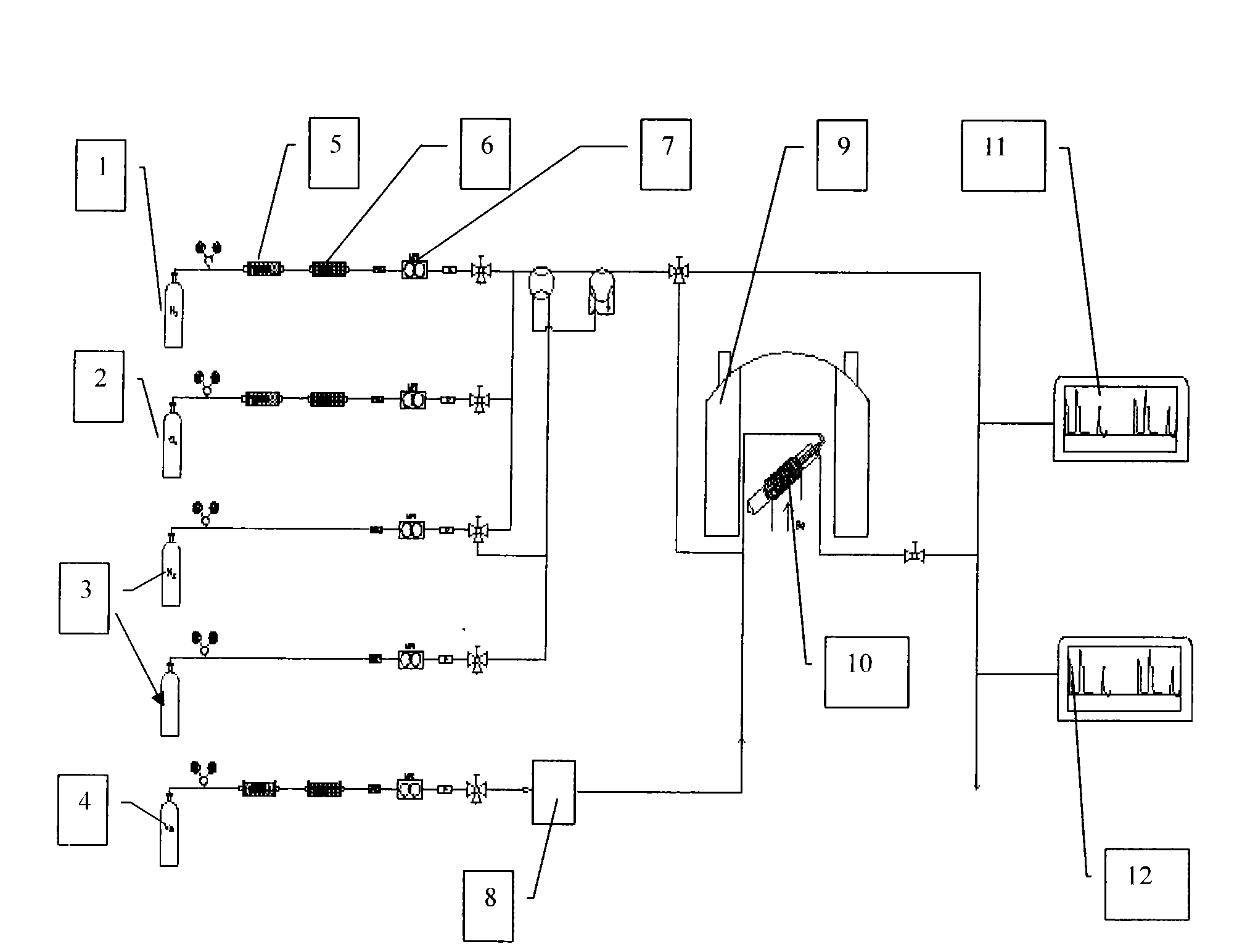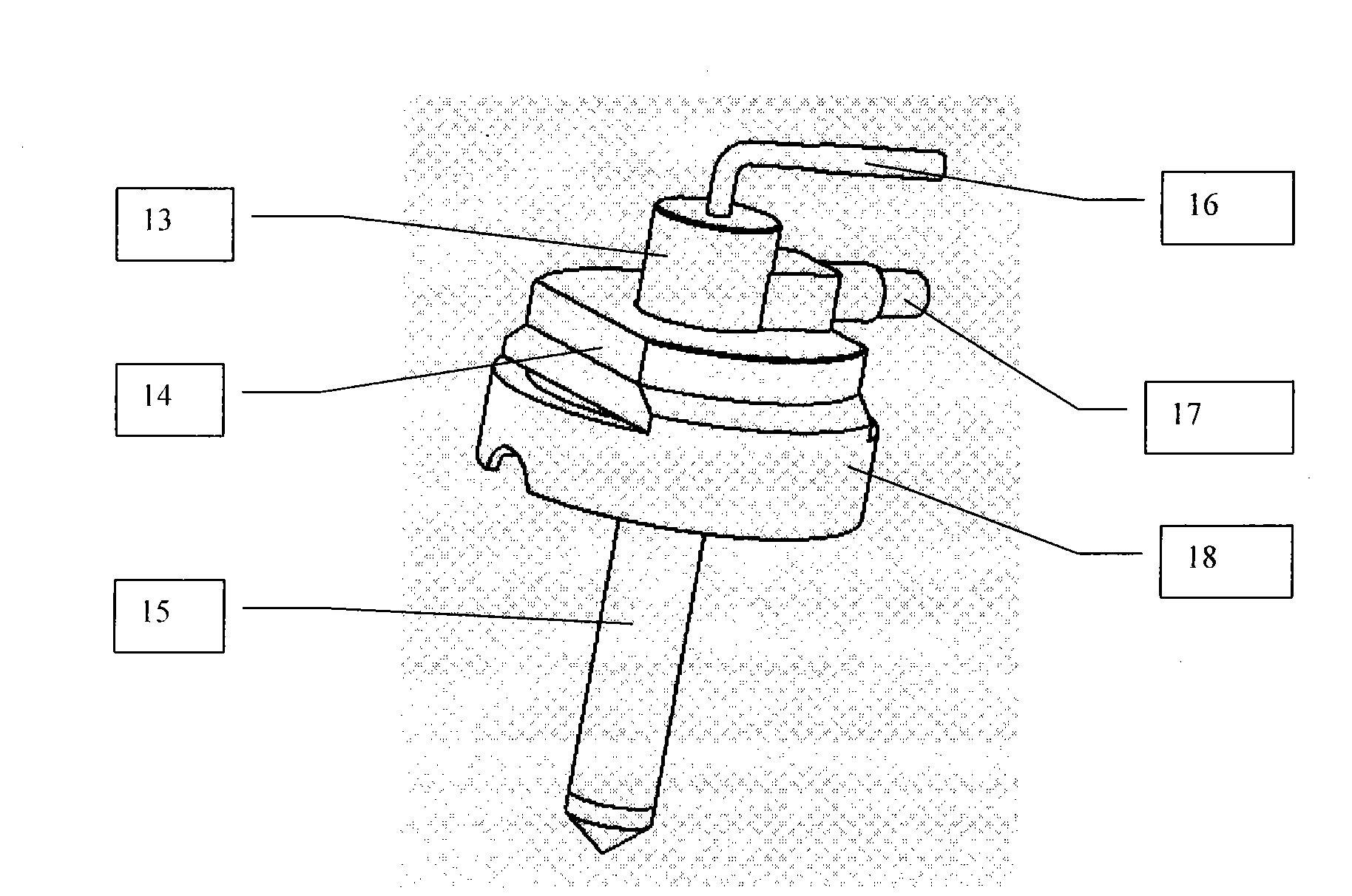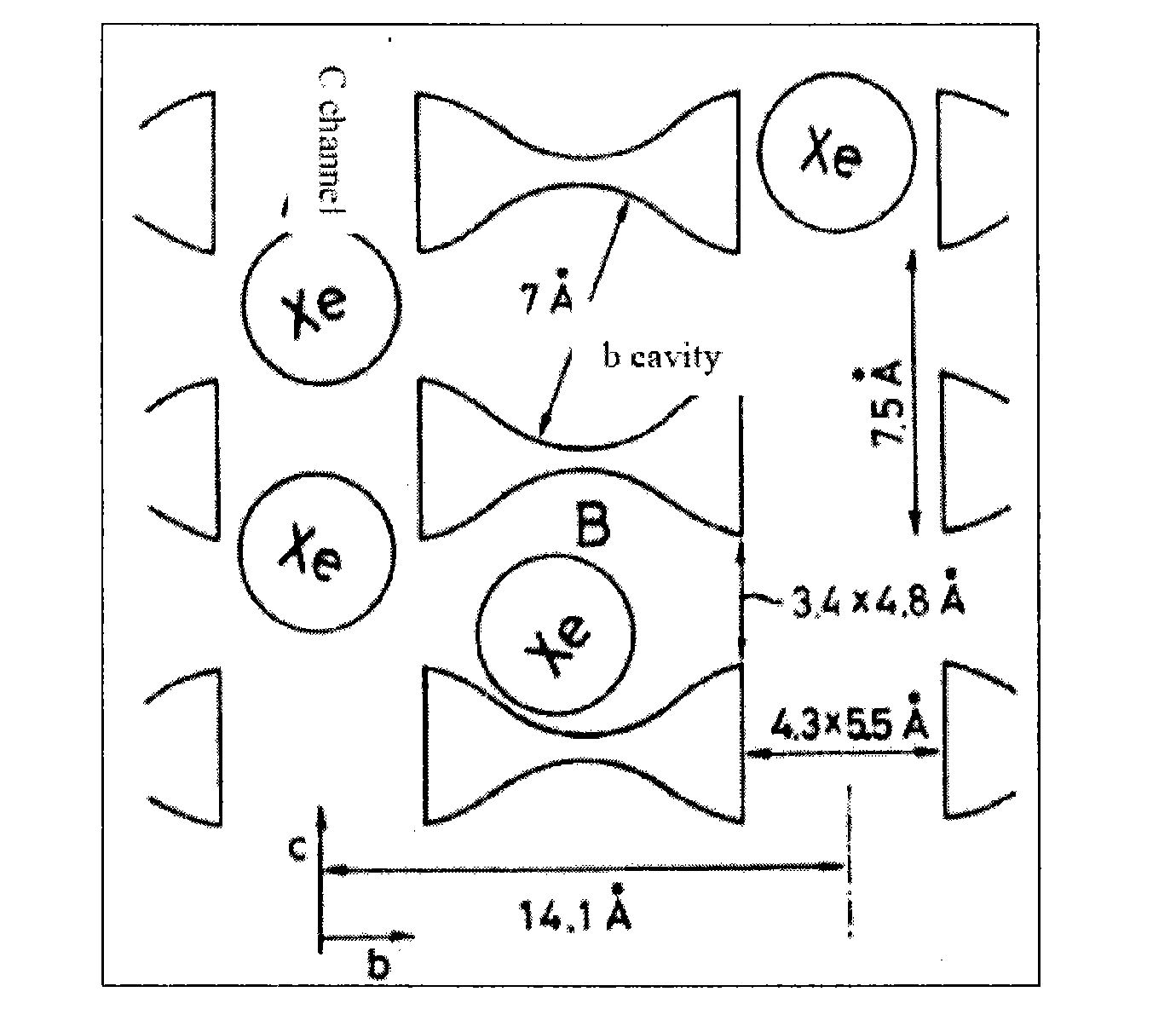Multiphase catalytic reaction device for testing in situ solid-state nuclear magnetic resonance
A technology of heterogeneous catalysis and reaction devices, which is applied in the direction of analysis by nuclear magnetic resonance, measurement devices, chemical analysis by catalysis, etc., and can solve the problems of high difficulty consumption and few
- Summary
- Abstract
- Description
- Claims
- Application Information
AI Technical Summary
Problems solved by technology
Method used
Image
Examples
Embodiment 1
[0043] Example 1: Laser Induced Hyperpolarization 129 Study on the Pore Structure of ZSM-35 Molecular Sieve by Xe Magic Angle Spin NMR
[0044] image 3 It is a structural schematic diagram of ZSM-35 molecular sieve (Zeolites, 1989, 9, 68), which has two pore structures: columnar straight channels parallel to the c-axis and cages along the b-axis (such as Figure 4 bcavity shown). We performed temperature-variable hyperpolarization of the pore structure of ZSM-35 using the aforementioned in situ continuous flow magic-angle spinning probe 129 Xe NMR studies.
[0045] Figure 4 A is the variable temperature hyperpolarization of ZSM-35 under the condition of magic angle rotation speed of 3 kHz 129 Xe NMR spectrum, Figure 4 B is the static hyperpolarization under the corresponding conditions 129 Xe NMR spectrum. The peak of the chemical shift at the low field (larger chemical shift) is assigned to the signal of the straight channel (C channel), and the peak of the chemica...
Embodiment 2
[0046] The adsorption process of embodiment 2 methanol on the HZSM-35 molecular sieve
[0047] Figure 5 is the hyperpolarization of the adsorption process of methanol on HZSM-35 at room temperature 129 Xe magic angle spinning NMR spectra. It can be seen from the relative intensities of the signal peaks of the two channels that as the adsorption time increases, the signal peaks of the straight channels decrease significantly, and after 20 minutes of adsorption, the equilibrium state is reached, and the signals of the straight channels are hardly observed. to, and then into methanol, 129 The Xe spectrum did not change significantly. It shows that methanol is preferentially adsorbed in the straight channel (C channel) of HZSM-35. Stop feeding the above-mentioned samples after methanol vapor adsorption for 40 min, and only feed Xe gas, and investigate the hyperpolarization at different times 129 Xe magic angle spinning NMR spectrum, such as Image 6 shown. It can be seen t...
Embodiment 3
[0048] Example 3: Laser Induced Hyperpolarization 129 Pore structure of CHA-MFI composite molecular sieves studied by Xe magic-angle spinning NMR
[0049] Figure 7 is under continuous flow conditions using the device of the present invention by hyperpolarizing 129 The pore structure of CHA-MFI composite molecular sieves was studied by Xe magic angle spinning NMR technique. It can be seen from the figure that at 25°C 129 There are three signal peaks in the Xe spectrum. In addition to the gas-phase Xe signal at 0ppm, the Xe signal in the adsorbed state in the molecular sieve channel is also observed in the downfield direction. Hyperpolarization of Magic Angle Rotation 129 The Xe spectrum can well distinguish the two pore structures of CHA and MFI. The peak at 84ppm is attributed to the signal of xenon adsorbed in the CHA structure, and the peak at 113ppm is attributed to the signal of xenon adsorbed in the MFI structure. We found that when the temperature increases from ...
PUM
 Login to View More
Login to View More Abstract
Description
Claims
Application Information
 Login to View More
Login to View More - R&D
- Intellectual Property
- Life Sciences
- Materials
- Tech Scout
- Unparalleled Data Quality
- Higher Quality Content
- 60% Fewer Hallucinations
Browse by: Latest US Patents, China's latest patents, Technical Efficacy Thesaurus, Application Domain, Technology Topic, Popular Technical Reports.
© 2025 PatSnap. All rights reserved.Legal|Privacy policy|Modern Slavery Act Transparency Statement|Sitemap|About US| Contact US: help@patsnap.com



